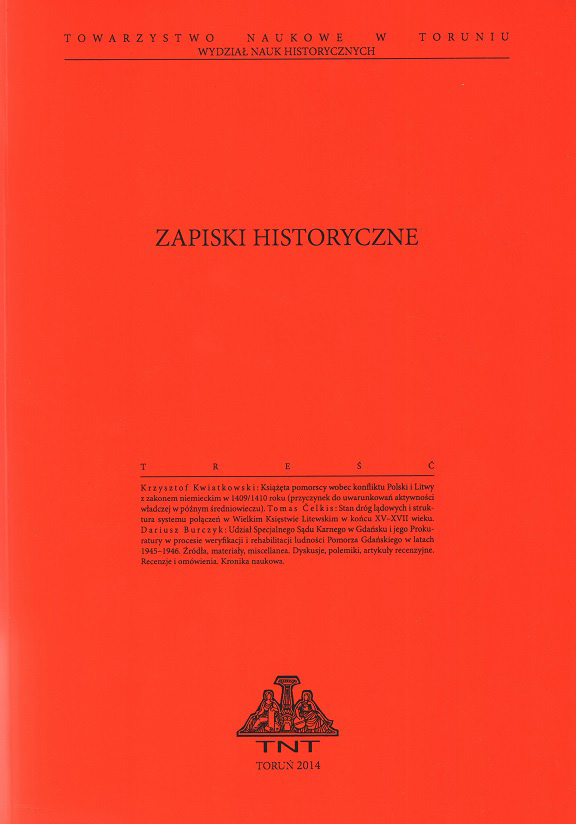Rezydencje Wejherów, Sobieskich i Przebendowskich w Rzucewie koło Pucka w świetle inwentarzy z lat 1676, 1711 i 1782
Residences of the Wejher, Sobieski and Przebendowski Families in Rzucewo near Puck in the Light of Inventories from 1676, 1711 and 1782
Author(s): Janusz DargaczSubject(s): Cultural history, Economic history, Local History / Microhistory, 17th Century, 18th Century
Published by: Towarzystwo Naukowe w Toruniu
Keywords: Royal Prussia; noble families; John III Sobieski; residences of noblemen; residential architecture; estate inventories; early modern period
Summary/Abstract: In the early modern period, the village of Rzucewo near the town of Puck was part of one of the largest landed estates in Royal Prussia. At that time, the estate belonged to the most prominent families, not only in Prussia, but in the entire Polish-Lithuanian Commonwealth. These were the noble families of Wejher, Radziwiłł, Sobieski and Przebendowski. They established a large residence in Rzucewo that encompassed the owners’ housing, numerous farm buildings and gardens for both decorative and utility purposes. In the years 1840–1845 a neo-gothic style palace was built for the von Below family, which remains to this day. The appearance of the estate in the earlier period has remained unknown, and the only scholarly work that discusses the history of Rzucewo has been a text by Franz Schultz from 1903. Only the recently discovered inventories from 1676, 1711 and 1782 provide more information on specific parts of the residence and make the analysis of the transformation of the estate in the seventeenth and eighteenth centuries possible. The descriptions of three residences that were built by subsequent owners of Rzucewo, namely: the Wejher family (at the beginning of the seventeenth century), the Sobieski family (at the end of the seventeenth century) and the Przebendowski family (c. 1770), are of particular interest. They are a valuable asset to the research on residences of noblemen in Royal Prussia by contributing new findings. Especially noteworthy are the investments made by the Sobieski family in Rzucewo, as they contradict the assumption recurring in historiographic literature that John III Sobieski was not interested in his estates in Prussia.
Journal: Zapiski Historyczne
- Issue Year: 86/2021
- Issue No: 4
- Page Range: 71-97
- Page Count: 27
- Language: Polish

